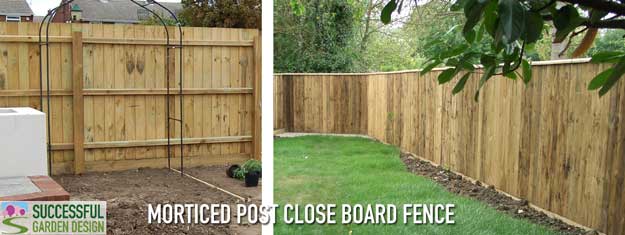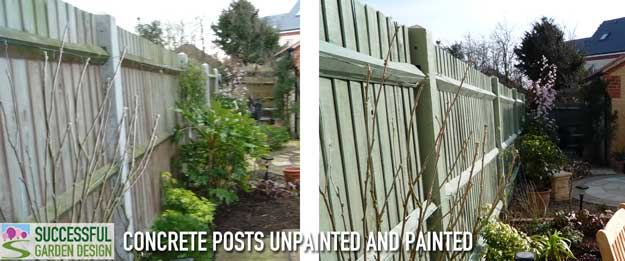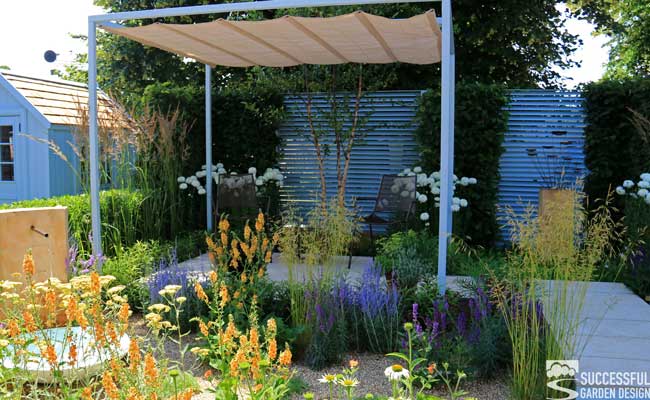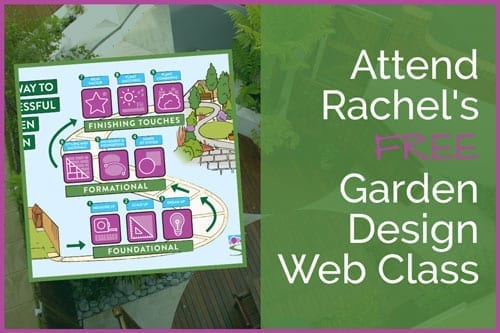
Many people have a bit of a love/hate relationship with fences. They love them as quick, easy ways to screen off their gardens and make them secure. They hate them for often being quite ugly and sadly over-priced. Also, they can often look ugly on their side of the fence, with the neighbours getting the nice-looking side!
So let’s take a look at exactly what to consider when choosing your fence.

Why are garden fences so expensive?
Even though you can get fencing panels for under £20 each, which seems quite reasonable, it’s amazing how soon it all adds up…
The fence
- For a 6-foot high fence, you need posts of 8-foot high. To this, you need to add a decent amount of concrete, sand and cement to hold the posts in place, plus one cubic metre of sand ballast (sand with 20mm of stone added for strength) per approximately 20 posts.
The labour
It takes time to dig a hole, concrete in the posts and put the fence up properly. And skilled labour is usually expensive.
- Quotations will usually factor in an hour for each fence post to be installed; perhaps a ridiculous amount of time, but you’d be amazed at how many soils contain compacted rubble instead of soil, especially on new building sites. What’s more, digging two foot down probably doesn’t sound like much, but it can be quite hard work and time-consuming. Sometimes a breaker (mini-road drill) needs to be hired, just to dig down far enough for the posts to be fixed firmly.
The end price
With the cost of the panels, sand, cement and concrete or timber posts, plus the gravel boards, fixings, labour and, of course, VAT, before you know it, each panel can cost around £100 or more to put up. Therefore, with just 10 panels, your garden fence really does add up.
You might not like the cost but if you compare it to the price of putting up a brick wall, a fence suddenly becomes great value for money.
What is the best fence to choose?
The quick answer is probably the best one you can afford.
Yes, you can get cheap panels but they never last as long as more expensive options. Bear in mind that the labour involved is more or less the same to put up a cheap panel as it is for an expensive one.

But choosing the right style of a fence doesn’t just come down to budget, it also comes down to your taste, the style of the garden and as importantly how much screening you need.
I mention how much screening because the more interesting and artistic looking the fence panel is, the more gaps it tends to have in it. You’d be amazed at just how much you can see through even the tiniest of gaps. I designed a garden for a friend and she chose a lovely fence panel which cost about £50 per panel. It looked great. About a week after it was up, she had a knock on the door from her neighbours who were worried about their privacy. She wondered what on earth they were talking about?
When she went round to their side of the fence, their path was on slightly higher ground and the angle that they looked at the fence from their back door meant you could see right through it because the pattern of the overlap left a gap. She was really shocked at how much they could see through the fence as it looked fine from her side. The solution was easy: a very fast-growing golden hop which covered the part of the fence they could see through in no time.
So, if you’re interested in a fence panel, before you purchase, it’s a good idea to hold a panel up and try viewing it from different heights to check just how much you can see through it.
Types of garden fences
Probably the best types of fences are made in situ as they tend to be stronger. This means installing a mortised post fence.
 Vertical board panel fence comes in an assortment of sizes and is a simple, upright design that can be attached to a timber post or inserted into a concrete slotted post (more on that in a moment).
Vertical board panel fence comes in an assortment of sizes and is a simple, upright design that can be attached to a timber post or inserted into a concrete slotted post (more on that in a moment).
Mortise post fences have a notch taken out of the posts and three rails slotted into them. Feather-edged boards (with one side thicker than the other so that you can overlap them more easily) are then attached. From the neighbour’s side, your fence looks like a continuous, neat stretch of fence; however, you can see the posts from your side.

If you’re wondering why on earth your neighbours end up with the nice side, it comes down to security more than anything. The crossbars can be used to climb over the fence very easily, making security very important.
Close board close board fences must have posts dug in deep or the first strong wind will have the entire fence blow down, rather than just a loose panel.
Tile batten fences are double-sided with slats staggered on the neighbour’s side to cover the gaps. Remember to check from the neighbours’ side how much you can see through it before you install this type of fence. If privacy is an issue, it’s a good idea to combine an exterior MDF board, adding the slatted, see-through part only at the top.
What is the best type of fence post, concrete or wood?

- Concrete last longest but can be ugly, although you can paint it.
- Hardwood timber like oak lasts about 10 years, sometimes longer.
- Softwood timber needs to be pressure treated and should last between 10 to 20 years.
Do be aware that preservative pressure treatments do not go right the way through the timber. They only go down to between 1 and 3 mm so if you cut the post, you must add a preservative to the cut end, especially if it’s the end being concreted into the soil.
If the landscaper cuts any of your fence’s timbers, make sure they are re-treated – it’s surprising the number of landscapers who don’t know that pressure treatments don’t reach deeply into the wood.

Garden fence examples
Here are some examples of modern styles of fencing. As you can see, part of their appeal comes down to the space between the slats.
If you are planning a fence like this, it’s usually a good idea to discuss it with your neighbours first to see if they are happy with the privacy it provides.
The ‘Tile Batten’ fence was double-sided, with the slats staggered on the neighbour’s side to cover the gaps. Nevertheless, you can still see quite a lot through it.
If privacy is an issue, the second fence example is a good choice. It combines an exterior white MDF board with the slatted, see-through part only at the top.

‘Urban style’ decorative fences are somewhere in between traditional and contemporary in style.


The final selection particularly suits traditional styles of properties, but can also work well with more modern homes.
Hazel makes a lovely decorative fence. Be warned though – they can be quite see-through!

Please note: The names I use for the fencing styles might well be different in your part of the world. Even in the UK, names can differ from region to region.
For those not keen on fences!
SGD reader, Graham, from New Zealand, recommended we attach cement boards onto a fence and paint it to give a smooth and clean finish to get away from the busyness of fence slats. In the UK I’ve used exterior MDF boards in a similar way as you can see in the photograph below.

Fences to avoid

Cheap ones! In the long run, they aren’t worth it. If you have no choice and have to go for the cheapest, make sure you choose good posts and get them concreted into position properly. That way, when you need to replace the panels, you won’t have the expense of replacing the posts as well – simply slot the new panels in place.
My particular dislike is for ‘Waney Edge’ panels. They tend to warp and break faster than any other panel in my experience. If you try to paint them, the paint usually runs through to the neighbour’s side because the wood has warped, leaving gaps between each slat.
How to cover ugly fences

Covering an ugly fence with plants is the obvious answer, but it’s not the quickest option. So if you want something a little quicker to disguise an existing fence – either yours or your neighbours’ – here are two options: paint it or screen it
Painting works best if the fence is in relatively good condition. There are many different shades of paint you can buy specifically for fences. Whilst it’s good to have a nice choice, there are some things you need to be aware of when it comes to painting a fence:
Painting an existing fence

Choosing paint colours for the outside is not like choosing for inside your house. So, for example, we all know that white or magnolia makes indoor spaces look larger. Do that outside and it’ll have the opposite effect. White brings the fence in closer to you, visually. Therefore, light colours – yes that includes popular sage greens – really make you notice that fence.
Dark colours with a higher degree of black, like dark forest greens, recess into the background. Think of all those black barns we have dotted around the English countryside. They blend in beautifully. If they were painted white, they would really jump out at you!

- Sage green paint was used to brighten up this dull looking fence – the white in the colour brings it forward.
Beware of paint!
One issue with painting fences is it will invariably end up running through to the other side unless you are very careful. So it might be an idea to discuss it with your neighbour before you get going. They might agree to paint theirs the same colour so that you won’t have to spend quite so much time and effort making sure the paint doesn’t seep to their side.
Screening
You can also disguise an ugly fence with fast-growing climbing plants or, and this is my favourite, add screening to an existing fence. I am particularly fond of willow screening, but you can get bamboo or heather too. Whilst this isn’t exactly a cheap option, I think it very effective.
A word of warning: Do make sure that the fence posts are in good condition and can support the additional weight of the screening. You won’t be very popular with your neighbours if their fence falls down because of your ‘improvements’! If the posts wobble easily, it’s probably not a good idea to attach anything to the fence, not even plants! So it might be best to put your own supports in front of the neighbour’s fence.
Final tip…
SGD reader, Janine wrote in to advise “People should check planning rules, for putting up fencing in particular, as there may be a maximum height and if they grow something like leylandii as a boundary. (Different countries apply different rules)… Plus it’s always a good idea to check your boundary lines especially if you have neighbours, who might object to a fence but not a hedge (if they’re good neighbours they might even share the cost 🙂. If the property boundary is adjacent to farmland, then the farmer must be informed especially if he has live-stock including horses.”
BUT of course, a nice fence alone will NOT give you a stunning garden – you have to get the design layout right first. If you’d like help with design…
Attend one of our FREE Fast Track Garden Design online classes…
Register on this page: https://www.successfulgardendesign.com/freeclasses/
*Photo Credit: 1st image, the wonderful Herry Lawford
*Photo Credit: Blue slat fence, the creative Karen Roe


10 replies to "Garden fencing – how to choose the right fence for your garden"
I would always go for panel fencing. The concrete posts that the panels are slotted in last for ages, and the panels themselves can be easily replaced. However, if you look after them they should last a long time themselves.
Just wondering on your opinion Rachel on recycled plastic fencing products. Low maintenace and nice appearance if you choose wisely. I have seen them in a few gardens and wondered what you think?
Hi Conor, I haven’t had a direct experience of them so I don’t know how long lasting they are but yes, as you say if you choose wisely, they’d most likely be fine.
just make sure with plastic fencing what degree of cold (or sun) the plastic can take. Remember both can discolour and distort depending on the temperature. Example: unless the plastic fencing was in a shady spot I would not use it in a warm country – Mediterranean heat or Polar North 🙂 I have heard that some plastic fencing in now bio-degradable but cant remember where I read this 🙁
Thank you for mentioning fences to avoid, I was actually quite drawn to the cheap ones thinking they won’t burn my pockets, but after reading your post, I have understood why good quality material should always be your first priority.
Never knew there are plenty of fences to choose from. Thanks for sharing!
Fences are all about human territory marking. My land, my animals, my privacy, my boundary. They block and harm all other forms of life which have different territorial maps to humans. The more fences we put up (plus all our other gardening activities done mostly for aesthetic rather than preservation of our delicate ecosystem), the more wildlife we disrupt. Over time wildlife declines in favour of humans and human controlled animals (pets, livestock) and the ecosystem which supports humanity goes out of balance, threatening human life. If possible, I try and take the point of view of a non-human and provide passage through our human territorial boundaries. Can we please all try and live with nature and accept it as it is, instead of trying to control it? This ecosystem took millennia to evolve to support human life; humans, only here for a tiny fraction of that, think we know it all and can ignore the ‘wisdom’ of the ages. The results we’re seeing in climate change, death, pollution, etc say it all. If humanity is to last much longer, we have got to learn to work within and as part of the ecosystem and stop trying to shut out all the parts humans arbitrarily don’t like. We are all custodians of this planet and we need to start thinking about more than short term safety and aesthetic when we garden – we know this approach is killing us; we need to watch nature, learn from it, and support it if we’re to keep our only planet liveable.
Thank you H for such thoughtful and well made points. You are absolutely right – I would love to see what you suggest in place too. It’s a wondeful future to imagine and bring into being :o)
I want to register for a free fast track garden design online class but struggle to.
Hi Larmac,
Apologies you’ve been having problems signing up – if you’d like to email us at support@successfulgardendesigncourses.com we’ll add you manually.